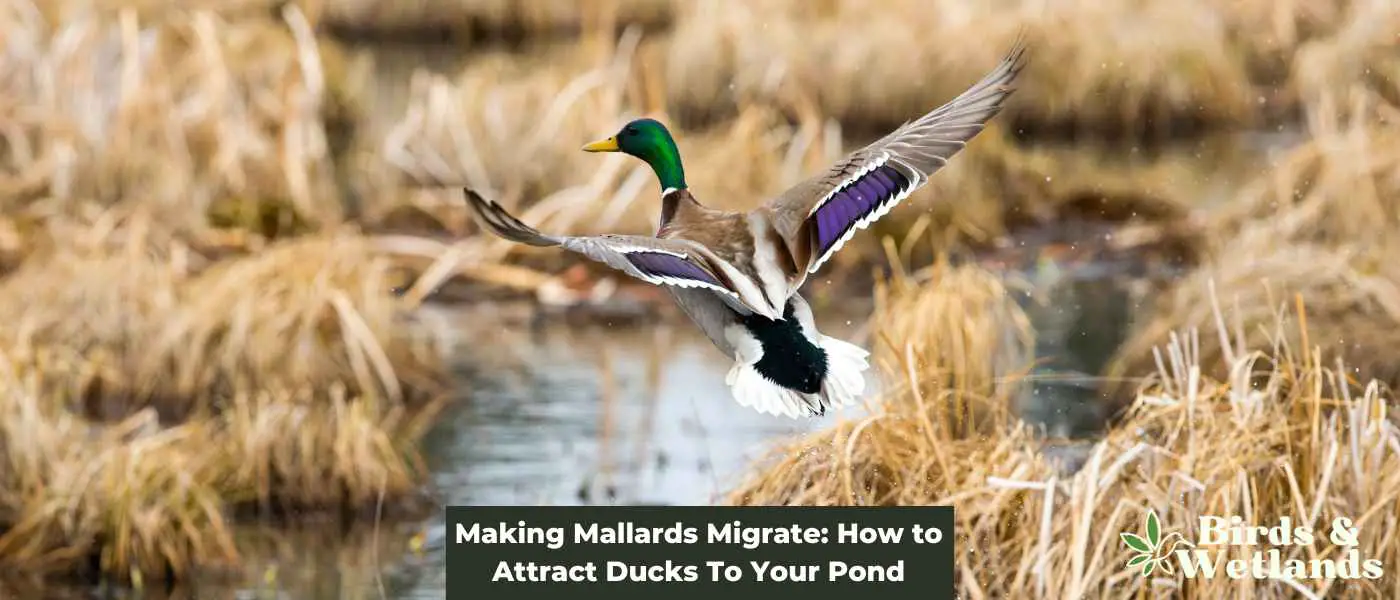Attracting ducks to your pond can be a fun and rewarding experience, especially for bird lovers. However, attracting these birds can be a bit of a challenge, as they require a specific habitat and environment to thrive.
How Do You Attract Ducks to Your Pond?
To attract ducks to your pond, create a welcoming habitat by providing a clean water source, planting native vegetation, and offering food and shelter. Add floating platforms or nesting boxes for nesting sites and scatter a mix of grains, seeds, and insects as supplemental food. Ensure a predator-free environment and minimize disturbances for a more appealing area.
Other animals, such as wood ducks, may also be attracted to your property if you create a suitable habitat for mallard ducks. Migratory birds, in particular, may be drawn to your property during their annual migration. By providing a welcoming environment for mallard ducks, you can also attract a variety of other bird species and wildlife to your property.
Key takeaways
Waterfowl are an important part of aquatic ecosystems and can be attracted to ponds or lakes.
Anatidae family includes common duck species like mallards, mandarins, and wood ducks.
Ducks are categorized as dabbling ducks (shallow water feeders) and diving ducks (deep water feeders).
Duck species have different nesting and habitat preferences.
To attract ducks to ponds, ensure water is accessible with shallow and deep areas.
Add aquatic and terrestrial plants to provide shelter and food.
Create nesting sites (duck boxes) for certain duck species.
Deter natural predators using methods like scent sprays, fencing, and owl decoys.
Use wild duck decoys to make the pond appear more attractive and secure.
Creating a Habitat for Wild Ducks
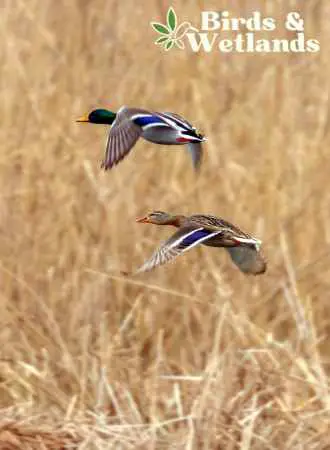
Creating a habitat to attract wild ducks can be a rewarding experience for wildlife enthusiasts. It is important to provide the necessary resources for ducks to thrive, including food sources, nesting sites, and habitat. Here are some tips to help create a habitat for mallard ducks.
Keep Water Accessible
Ensure pond or lake has shallow and deep areas for dabbling and diving ducks
Add Aquatic Plants
Provide food and shelter with a mix of aquatic and terrestrial plants
Create Nesting Sites
Install duck boxes or provide suitable nesting areas in existing vegetation
Deter Natural Predators
Use scent sprays, fencing, and owl decoys to protect ducks from predators.
Use Wild Duck Decoys
Place decoy ducks in the water and on banks to make the pond appear more attractive and secure
Duck Pond & Water
One of the most important things you can do to attract mallard ducks is to provide them with access to water. Ducks need water to drink, bathe, and find food. If you have a pond or other body of water on your property, make sure it is accessible to ducks. You can also create a small pond or water feature specifically for attracting ducks.
A duck pond is an excellent way to attract passing ducks or whether a mallard or a wood duck. The pond should be at least 20 feet in diameter and 2 feet deep. The pond should be surrounded by tall marsh grasses and aquatic plants.
Backyard ponds can also be used to attract mallard ducks. The pond should be at least 10 feet in diameter and 2 feet deep. The pond should be surrounded by tall marsh grasses and aquatic plants.
Shallow wetlands are excellent habitats for mallard ducks. They provide food and nesting sites for ducks. Wetlands can be created by excavating shallow depressions and lining them with clay.
Shallow shelves can be created in ponds to provide a place for mallard ducks to feed. The shelves should be no more than 6 inches deep. Duck decoys in the pond can also entice ducks to stop in the pond.
Aquatic Plants & Bushes

Aquatic plants are essential for mallard ducks as they provide food and nesting sites. Some examples of aquatic plants include water lilies, cattails, and bulrushes. These plants also help improve water quality by removing excess nutrients from the water.
Seeding plants such as millet and corn can be planted near the water’s edge to provide food for mallard ducks. Berry bushes such as blackberries and raspberries can be planted near the water’s edge to provide food for mallard ducks.
Creating a habitat for mallard ducks requires providing the necessary resources for ducks to thrive. By following these tips, wildlife enthusiasts can create a habitat that attracts mallard ducks and provides a rewarding experience for all involved.
Providing wild ducks with a source of food can also help attract them to your property. Mallard ducks eat a variety of foods, including seeds, insects, and aquatic plants. You can provide ducks with food by scattering birdseed or duck pellets around your pond or water feature.
Best Waterfowl Feed
Delightful Feeding Experience
Transform your backyard into a scenic waterfowl habitat and enjoy an interactive feeding experience with Natural Waterscapes Waterfowl Floating Food.

Pros
- Nutritious Food: Natural Waterscapes Waterfowl Floating Food is specifically designed to provide essential nutrients to waterfowl, including swans, geese, and ducks, helping them maintain a healthy diet.
- Convenient: The food comes in resealable packaging, making it easy to store and use as needed. It is also easy to handle and transport.
- Floating Formula: The floating formula of the food allows it to remain on the surface of the water, making it easier for waterfowl to eat and minimizing the risk of water contamination.
- Attracts Waterfowl: The food is formulated to attract various waterfowl species, including swans, geese, and ducks, to your pond, lake, or other water body, providing an opportunity to observe and enjoy these beautiful creatures.
- Environmentally Friendly: Natural Waterscapes Waterfowl Floating Food is made with environmentally friendly ingredients and does not contain any harmful preservatives, making it safe for both waterfowl and the environment.
Cons
- Shelf Life: The food’s shelf life may be limited compared to other types of waterfowl food due to its natural ingredients and lack of preservatives. This means you may need to use it up quickly after opening the package to prevent it from going bad.
Create Nesting Sites
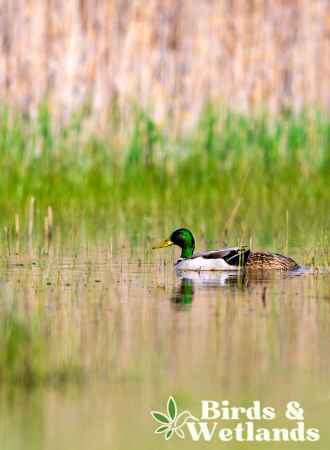
Mallard ducks require nesting sites near water. They prefer to nest in tall marsh grasses or near the water’s edge. Nesting boxes can also be provided to attract nesting ducks. Nesting boxes can be provided to attract nesting ducks.
The nest boxes should be placed near the water’s edge and surrounded by tall marsh grasses. Ducks spend much of their time nesting and resting, so these are vital. Brush piles provide cover for mallard ducks and their young. They also serve as a nesting site for ducks.
Tall marsh grasses provide cover for mallard ducks and their young. They also serve as a nesting site for ducks. Some examples of tall marsh grasses include cordgrass, reeds, and sedges and serve as a feeding groun for aquatic insects which ducks feed off.
Water lilies are an excellent food source for mallard ducks. They also provide cover for ducks and their young.
Woodlink Cedar Duck Nesting Box
Attract ducks to your wetland area and provide them with a cozy, secure nesting space using the expertly crafted Woodlink Cedar Duck House, made with high-quality materials in the USA.

Pros
- Ornithologically designed: This nesting box is specifically created for ducks, ensuring an optimal environment for them to thrive.
- High-quality materials: Made from re-forested, kiln-dried, inland red cedar, the Woodlink Cedar Duck House is both durable and eco-friendly.
- Easy to install: The nesting box comes fully assembled, with screws included for quick and easy mounting.
- Made in the USA: Take pride in knowing that you are supporting a product that is made domestically, ensuring top-notch quality and craftsmanship.
- Versatile use: While designed specifically for ducks, this nesting box can also be occupied by other species like screech owls, squirrels, and pileated woodpeckers.
Cons
- Mounting height: Users must research and choose the appropriate mounting height (usually 4-6 feet above the ground) and install a baffle on the post to deter predators like raccoons and cats.
- Limited viewing access: Although the front of the box can be opened for viewing, it is important not to disturb nesting birds, which may limit opportunities for observation.
Deter Natural Predators
Mallard ducks are a common sight in many parks and ponds, and attracting them to your yard can be a rewarding experience for bird watching. However, it is important to protect these ducks from potential predators, both natural and human-made.
Mallard ducks face a variety of potential predators in the wild. These can include birds of prey such as hawks and owls, as well as larger predators such as foxes and raccoons. To protect your ducks, it is important to provide them with cover and hiding places, such as dense vegetation or artificial shelters.
Feral Cats & Other Predators
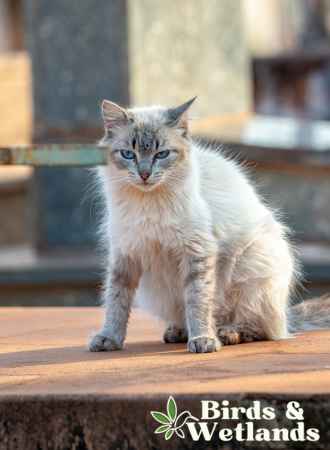
Feral cats are a common predator of mallard ducks, and can pose a serious threat to nesting females and their young. To protect against feral cats, it is important to keep your yard clean and free of food sources that may attract them. You can install cat-proof fencing or other barriers to keep these predators out.
Small predators such as weasels, snakes, and rats can also pose a threat to mallard ducks, particularly during nesting season. To protect against these predators, it is important to provide your ducks with nesting boxes or other secure nesting sites that are difficult for small predators to access.
Other predators that may pose a threat to mallard ducks include domestic dogs and humans. To protect against domestic dogs, it is important to keep your ducks in a secure enclosure or fenced area. It is important to educate visitors to your yard or park about the importance of respecting wildlife and not disturbing nesting sites or young ducklings..
Surrounding Area
The area surrounding your pond or water feature is also important. Ducks prefer areas with plenty of vegetation and cover. Planting shrubs, bushes, and trees around your pond can provide ducks with the cover they need to feel safe and secure. You can also create nesting boxes or baskets to encourage ducks to stay and breed in the area.
When creating a pond or water feature for ducks, it’s important to make sure the sides slope gradually. This will allow ducks to easily enter and exit the water. If the sides are too steep, ducks may have difficulty getting in and out of the water, which can discourage them from visiting.
Ducks also need cover to feel safe and secure. Planting shrubs and bushes around your pond or water feature can provide ducks with the cover they need to feel comfortable. You can also create brush piles or other structures to provide additional cover and remember ducks will nest in ground nests in grassy areas which are covered.
Use Wild Duck Decoys

Using wild duck decoys is an effective and popular strategy for attracting ducks to your pond. Decoys are designed to imitate the appearance and behavior of real ducks, giving the impression of a safe and welcoming environment for wild ducks to land and explore.
One of the key factors in attracting ducks with decoys is to select a variety of species and styles that represent the types of ducks you want to attract. This may include mallards, wood ducks, pintails, or teal. Having a mixture of drakes and hens in different postures like resting, feeding, or preening can create a more natural and convincing scene.
Placement of the decoys is crucial to ensure that they are visible from the air and the water. Position them near the edge of the pond, on the water, or on the shore, but make sure they are not too clustered together. Spread them out to create a more realistic and appealing environment for wild ducks.
Using a combination of motion and sound can further enhance the attractiveness of your pond. Spinning wing decoys, water ripples, or duck calls can help to catch the attention of passing ducks and encourage them to investigate your pond.
Flambeau Classic Mallard Decoys
Revolutionize your duck hunting experience with Flambeau Classic Mallard Decoys, boasting exceptional realism and unmatched durability – a must-have for any serious hunter.

Pros
- Unsurpassed realism: Flambeau Classic Mallard Decoys feature a high-definition paint scheme and UVision technology to mimic the ultraviolet signature of waterfowl plumage.
- Expert craftsmanship: Carved by renowned master carvers Tom Christie, Dave Van Lanen, and Rich Smoker, these decoys showcase lifelike details that will fool even the most cautious birds.
- Versatile keel design: The proprietary keel design includes four tie-off points, allowing for adaptable motion in various wind or water conditions, and an adjustable anchor eyelet to modify depth.
- Durable construction: Built to withstand the demands of duck hunting, these decoys will maintain their realism and functionality over time.
- Comprehensive 6-pack: The set includes two active drakes, one semi-resting drake, and three semi-resting hens, providing a well-rounded decoy spread to attract more ducks.
Cons
- Size: At 14 inches, these decoys might not be the ideal size for every hunting scenario, and some hunters may prefer larger or smaller decoys.
However, numerous factors contribute to whether ducks visit a specific garden ponds at a particular time. These include the current season, the temperature in the local area and to the north of the pond, the number of ducks in the migration path, the water levels, the presence of other feeding and resting locations nearby, and weather patterns such as cold fronts.
FAQS for Attracting Ducks to Your Pond
What is the best attractant for ducks?
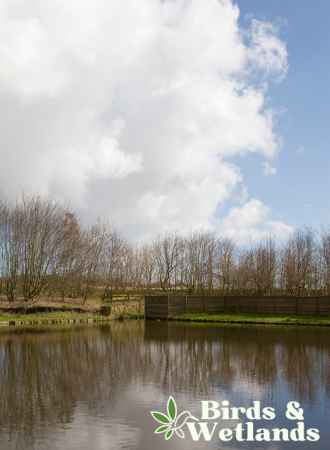
The best attractant for ducks is a combination of natural habitat, food sources, and clean water. Create a welcoming environment by providing a pond or wetland area with aquatic plants, seeds, and insects, as well as a safe nesting space to encourage ducks to visit and stay.
How do you befriend a wild mallard?
Befriending a wild mallard requires patience, consistency, and respect for their natural instincts. Visit the duck’s location regularly, maintaining a safe distance and offering appropriate food like leafy greens or grains. Over time, the mallard may become more comfortable with your presence.
What do hunters use to attract ducks?
Hunters typically use decoys and duck calls to attract ducks. Decoys are designed to resemble ducks and are strategically placed in the water to entice real ducks to land nearby. Duck calls are devices that mimic duck vocalizations, luring them closer to the hunter’s location.
How do you get ducks to come to you?
To get ducks to come to you, offer appropriate food like grains or leafy greens, and maintain a calm, non-threatening demeanor. Allow the ducks to approach at their own pace, without sudden movements or loud noises, to build trust and encourage them to feel comfortable around you.
How do I attract ducks to my house?
Attract ducks to your house by providing a suitable habitat with a pond or wetland area, aquatic plants, and safe nesting spaces. Pond owners should also offer a variety of food sources, such as seeds, insects, and small fish, and maintain clean water conditions to encourage ducks to visit and thrive.

